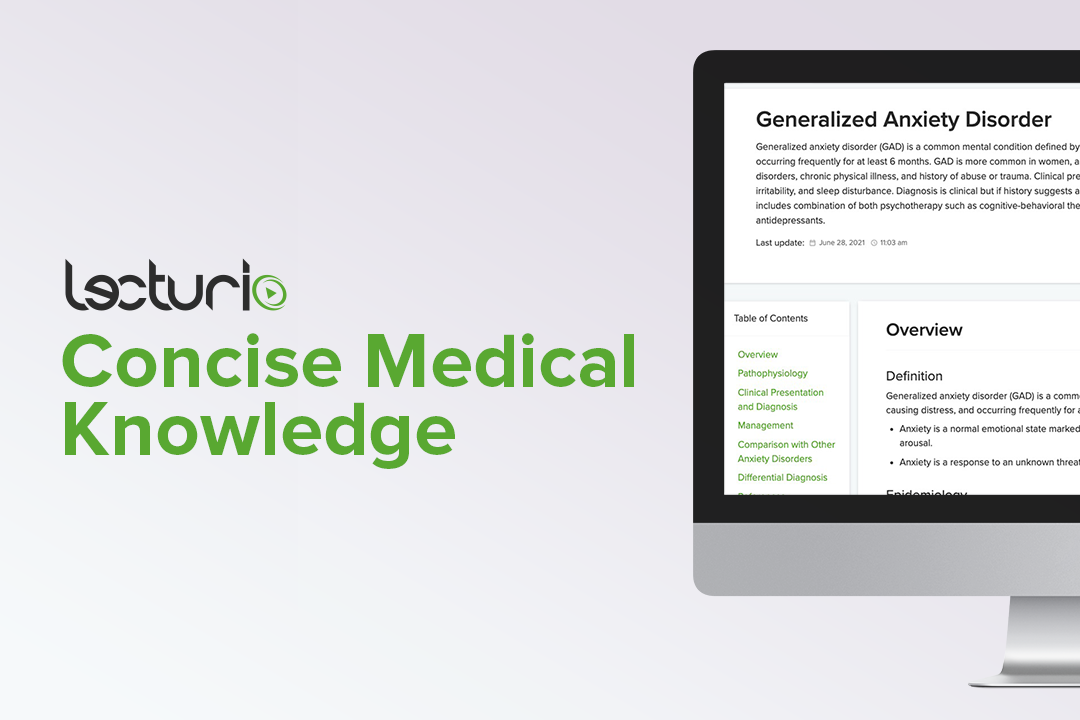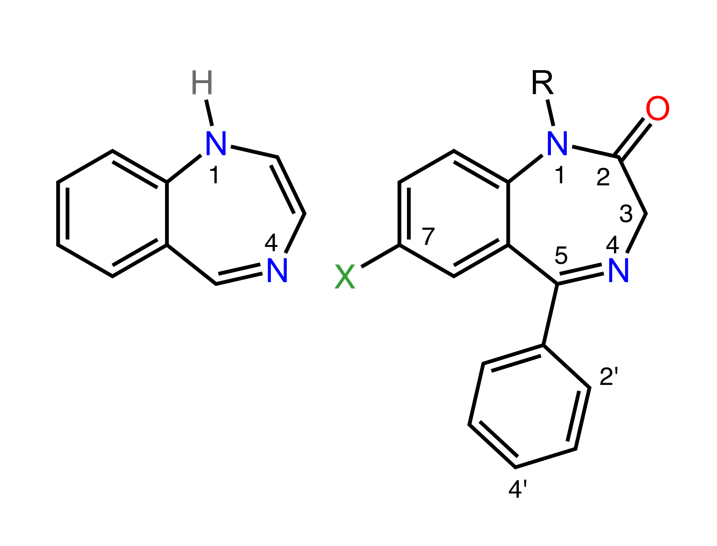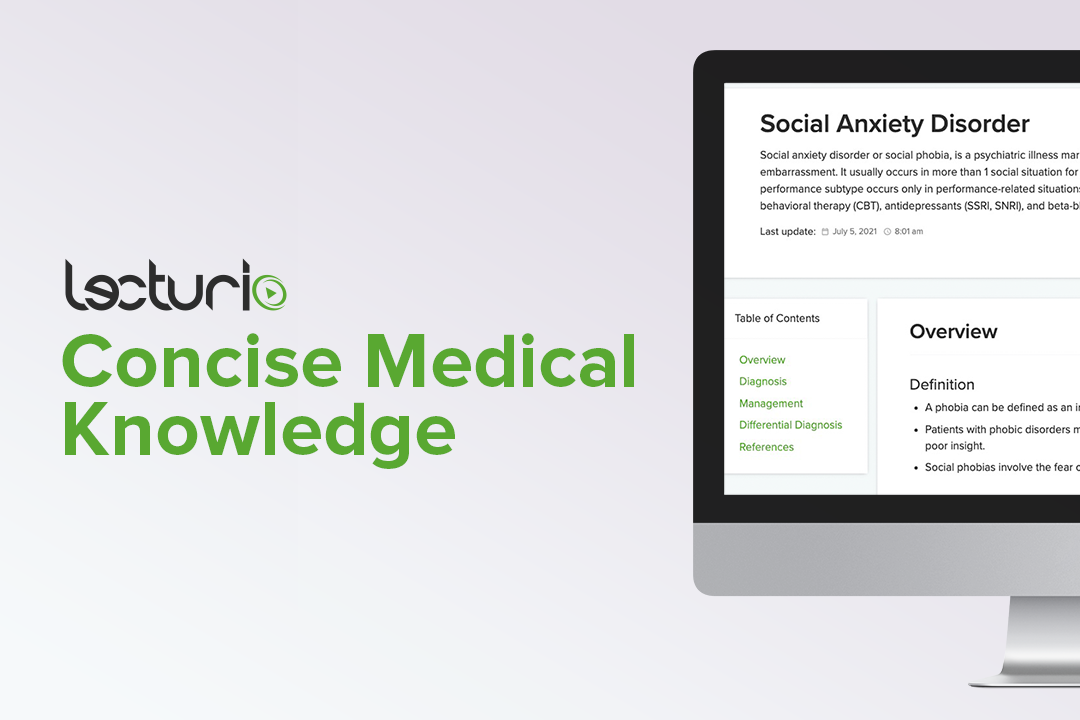Playlist
Show Playlist
Hide Playlist
Anxiety – Psychological Disorders (PSY)
-
Slides Psychological Disorders.pdf
-
Reference List Psychology and Sociology.pdf
-
Download Lecture Overview
00:01 So, let’s start going through each now. 00:03 Anxiety, so what is anxiety? So this is an emotional state, so it’s more emotionally driven of unpleasant physical and mental arousal. 00:10 And so what happens with individuals with anxiety is that you have these intense, frequent, irrational and uncontrollable episodes, and so their thoughts and behaviors get a little bit out of control. 00:22 And when you speak to individuals who have anxiety, they say, “My mind is racing a mile a minute and I really can’t control where I’m going,” and the thoughts don’t necessarily make sense, they become slightly irrational. 00:34 So for example, somebody who is suffering from anxiety might say, “I have an appointment at 10 o’clock but it’s 9:10 right now and I haven’t put on my pants yet but my pants are still on the dryer, and that reminds me I need to get a new lint remover for the dryer and the stores are going to be closing in 20 minutes, and the car needs gas, and how am I going to make it to the store?” So you can see it’s snowballing out of control and their thoughts are going frantic. 01:02 It’s not that they’re not connected, but it’s slightly irrational, as opposed to somebody who is maybe not suffering from anxiety might say, “I have an appointment in 20 minutes. 01:10 I should probably get a move on and get in the car and get going,” end of story, full stop. 01:16 So you can see how one is going quite frantic and one is a little bit more controlled, and that’s the biggest description that they say is I have a lack of control of my thoughts. 01:27 Let's have a view on the different types of anxiety disorders. 01:31 First, there is separation anxiety disorder, the individual with this disorder is fearful or anxious about separation from attachment figures to a degree that is developmentally inappropriate. 01:41 There is persistent fear or anxiety about harm coming to attachment figures and events that could lead to loss of or separation from attachment figures and reluctance to go away from attachment figures as well as nightmares and physical symptoms of distress. 01:54 Although, the symptoms often develop in childhood, they can be express throughout adulthood as well. 01:58 Another type of anxiety disorders is selective mutism. 02:01 This is characterized by a consistent failure to speak in social situations in which there is an expectation to speak. 02:07 For example in school, even though the individual speaks another situations, the failure to speak has significant consequences on achievement and academic or occupational settings or otherwise interferes with normal, social communication. 02:18 Next we have specific phobia, individuals with specific phobia are fearful or anxious about or avoidant of certain objects or situations. 02:27 A specific cognitive ideation is not featured in this disorder as it is in other anxiety disorders. 02:32 The fear anxiety or avoidance is almost always immediately induced by the phobic situation to the degree that it is persistent and out of proportion to the actual risk post. 02:42 There are various types of specific phobias for example, with animals, natural environment, blood injection injuries, just to name a few. 02:51 Then there is social anxiety disorder. 02:53 In this case, the individual is fearful or anxious about or avoidant of social interactions and situations that involve the possibility of being scrutinize. 03:01 This include social interactions such as meeting unfamiliar people, situations in which the individual may be observed eating or drinking. 03:08 In situations in which the individual performs in front of others. 03:11 The cognitive ideation is being negatively evaluated by others by being embarrassed, humilities or rejected or offending others. 03:18 Next on the list is panic disorder. 03:20 The individual with this form of anxiety disorder experiences recurrent unexpected panic attacks and is persistently concerned or worried about having more panic attacks or changes of his or her behavior in maladaptive ways because of the panic attacks. 03:33 Examples could be the avoidance of exercise or of unfamiliar locations. 03:38 Panic attacks are abrupt surges of intense fear or intense discomfort that reach a peak within minutes accompanied by physical and/or cognitive symptoms. 03:46 Panic attacks may be expected this such as in response to a typically feared object or situation or unexpected meaning that the panic attack occurs for no apparent reason. 03:55 Now, let's talk about agoraphobia, individuals with agoraphobia are fearful and anxious about two or more of the following situations. 04:02 Using public transportation, being in open spaces, being in enclosed places, standing in line or being in a crowd or being outside of the home alone in other situations. 04:11 Then there is generalized anxiety disorder or GAD. 04:14 The key features of GAD are persistent and excessive anxiety and worry about various domains including work and school performance which the individual finds difficult to control. 04:24 The individual experiences physical symptoms including restlessness or feeling keyed-up or on edge, being easily fatigue, difficulty in concentrating or mind going blank, irritability, muscle tension and sleep disturbance. 04:35 And as a last type, there is substance/medication induced anxiety disorder. 04:39 This disorder involves anxiety due to substance intoxication or withdraw or to a medication treatment.
About the Lecture
The lecture Anxiety – Psychological Disorders (PSY) by Tarry Ahuja, PhD is from the course Individual Influences on Behavior.
Included Quiz Questions
Which of the following describes an individual with generalized anxiety disorder?
- Mary has persistent anxiety and worry about multiple aspects of her life, including work, causing her to feel restless and have difficulty sleeping.
- Jane has not been sleeping well and is having nightmares after being robbed in her house 2 days ago.
- Barry has been having flashbacks from his time in the military since he got back home 7 months ago.
- Drew has episodes of intense panic with sweating and difficulty breathing that last for 10–15 minutes and are triggered by specific situations.
- Mark has extreme anxiety when he needs to give a presentation.
Which of the following describes a person with a phobia?
- Whenever he is on an airplane, Drew develops persistent and out-of-proportion anxiety.
- Mark has been having flashbacks from his time as a policeman since he retired five months ago.
- Amy experiences a constant and persistent feeling of anxiety.
- Diana rechecks the locks on her doors seven times before leaving to make sure they are locked.
Emily becomes pale and anxious, starts sweating, and has difficulty breathing when she is the main speaker at a conference. This has happened previously in similar situations. What condition does she likely have?
- Social anxiety
- Specific phobia
- Anxiety disorder
- Introvert
- Malingering
Customer reviews
5,0 of 5 stars
| 5 Stars |
|
5 |
| 4 Stars |
|
0 |
| 3 Stars |
|
0 |
| 2 Stars |
|
0 |
| 1 Star |
|
0 |







